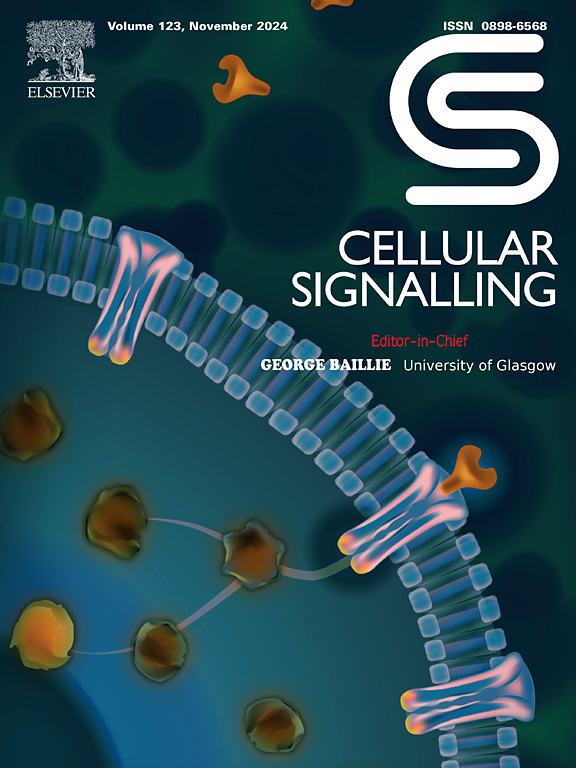ACVR1 mediates renal tubular EMT in kidney fibrosis via AKT activation
IF 4.4
2区 生物学
Q2 CELL BIOLOGY
引用次数: 0
Abstract
Tubulointerstitial fibrosis in the kidneys is a chronic and progressive process. Although studies suggested that tubular epithelial-mesenchymal transition (EMT) plays a key role in the development of kidney fibrosis, whether ACVR1, a member of the TGFβ superfamily, is involved in the EMT needs to be illustrated.
Using bioinformatics analysis of bulk-seq data (GSE23338 and GSE168876), we found that TGF-β1 perhaps activated the PI3K/AKT signaling pathway and induced the mRNA expression of ACVR1, fibronectin, and Collagen I in HK-2 cells (human renal tubular epithelial cell line). Furthermore, qPCR and western blotting results confirmed the high expressions of ACVR1 and EMT markers in TGFβ-induced HK-2 cells. Similar results were also found in the UUO mouse model. Besides, different time-point immunofluorescent staining indicated a positive correlation between the expression of the ACVR1 and EMT marker vimentin in TGF-β1-induced HK-2 cells. Consequently, knockdown ACVR1 effectively inhibited the expression of TGF-β1-induced EMT markers and AKT phosphorylation in HK-2 cells. Moreover, treatment of HK-2 cells with MK2206 (an allosteric inhibitor of AKT) decreased the activation of AKT and the expression of α-SMA while treatment of cells with SC79 (a AKT activator) enhanced the expression of α-SMA.
These findings suggest that ACVR1 regulated the EMT of renal tubular epithelial cells through activation of the AKT signaling pathway and that ACVR1 could be considered novel therapeutic targets for renal fibrosis.
ACVR1 通过激活 AKT 在肾脏纤维化过程中介导肾小管 EMT
肾脏中的肾小管间质纤维化是一个慢性和渐进的过程。尽管研究表明肾小管上皮-间质转化(EMT)在肾脏纤维化的发展过程中起着关键作用,但 TGFβ超家族成员 ACVR1 是否参与了 EMT 还需要进一步说明。通过对大量序列数据(GSE23338 和 GSE168876)进行生物信息学分析,我们发现 TGF-β1 可能激活了 PI3K/AKT 信号通路,并诱导了 HK-2 细胞(人肾小管上皮细胞系)中 ACVR1、纤连蛋白和胶原 I 的 mRNA 表达。此外,qPCR 和 Western 印迹结果证实,在 TGFβ 诱导的 HK-2 细胞中,ACVR1 和 EMT 标记物的表达量很高。在 UUO 小鼠模型中也发现了类似的结果。此外,不同时间点的免疫荧光染色表明,在TGF-β1诱导的HK-2细胞中,ACVR1和EMT标记物波形蛋白的表达呈正相关。因此,敲除 ACVR1 能有效抑制 TGF-β1 诱导的 HK-2 细胞 EMT 标记的表达和 AKT 磷酸化。此外,用 MK2206(一种 AKT 的异位抑制剂)处理 HK-2 细胞可降低 AKT 的活化和 α-SMA 的表达,而用 SC79(一种 AKT 激活剂)处理细胞可增强 α-SMA 的表达。这些发现表明,ACVR1通过激活AKT信号通路调控肾小管上皮细胞的EMT,ACVR1可被视为肾脏纤维化的新型治疗靶点。
本文章由计算机程序翻译,如有差异,请以英文原文为准。
求助全文
约1分钟内获得全文
求助全文
来源期刊

Cellular signalling
生物-细胞生物学
CiteScore
8.40
自引率
0.00%
发文量
250
审稿时长
27 days
期刊介绍:
Cellular Signalling publishes original research describing fundamental and clinical findings on the mechanisms, actions and structural components of cellular signalling systems in vitro and in vivo.
Cellular Signalling aims at full length research papers defining signalling systems ranging from microorganisms to cells, tissues and higher organisms.
文献相关原料
公司名称
产品信息
索莱宝
DAPI
 求助内容:
求助内容: 应助结果提醒方式:
应助结果提醒方式:


